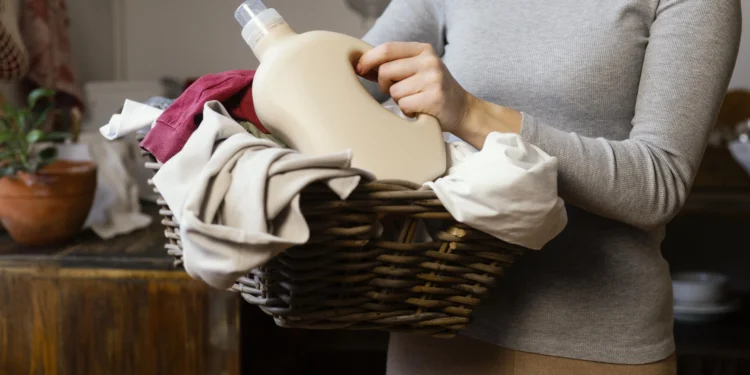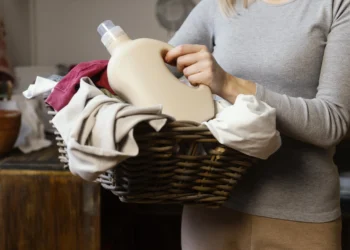Your bras are among the most hardworking yet most delicate items in your wardrobe. They support your shape, boost your confidence, and ensure your clothes fit perfectly — but only if they’re properly cared for. Despite this, many people unknowingly shorten their bras’ lifespan through poor washing habits or improper storage.
If you’ve ever noticed stretched-out straps, misshapen cups, or underwires poking through after only a few months, chances are your washing routine might be to blame. The good news? With the right washing and storage techniques, you can extend the life of your bras and keep them looking (and feeling) brand new for years.
In this guide, we’ll walk you through exactly how to wash, dry, and store your Wash Bras the right way — including tips for preserving those essential daily-use bras that you wear most often.
Why Proper Bra Care Matters
Before diving into the “how,” let’s talk about the “why.” Bras are constructed with intricate materials — elastic bands, molded cups, lace, mesh, and underwire — all designed to provide comfort and support. These materials are sensitive to heat, detergent chemicals, and friction.
When washed or dried incorrectly, bras can lose their elasticity, shape, and structure — all of which compromise both comfort and support.
Here’s what can go wrong with poor care:
- Elastic fatigue: Hot water or dryers weaken elastic fibers, causing bras to lose their stretch.
- Cup deformation: Twisting or folding molded cups can lead to creases and dents.
- Underwire damage: Rough handling or machine agitation can bend or break the underwire.
- Color fading and fabric wear: Harsh detergents and overwashing strip fabrics of color and softness.
Considering the investment that goes into a good bra, it makes sense to give them a care routine worthy of their role in your wardrobe.
How Often Should You Wash Your Bras?
One of the biggest misconceptions about bra care is that you should wash them after every single wear. In reality, overwashing can be just as damaging as not washing often enough.
Experts recommend washing bras after 3–4 wears, though this can vary depending on the season and activity level. If you live in a hot climate or sweat more frequently, you may need to wash them after every 2 wears.
Here’s a simple guide:
- Daily-use bras: Every 2–4 wears.
- Sports bras: After every use (due to sweat buildup).
- Delicate or lace bras: Every 3–5 wears, depending on use and exposure to body oils.
Also, avoid wearing the same bra two days in a row. Rotating your bras allows the elastic to recover, maintaining their fit and support for longer.
Also Read : Choosing a Game Server? Here Are 3 Things You Need to Know
The Best Way to Wash Your Bras
Step 1: Read the Care Label
Every bra comes with a care tag for a reason. Before washing, check the label for fabric composition and washing instructions. Some delicate materials like silk, satin, or lace require hand washing only.
Step 2: Hand Wash Whenever Possible
The gold standard for bra care is hand washing. It’s gentle, effective, and helps your bras retain their original shape.
Here’s how to do it:
- Fill a basin with lukewarm water — not hot.
- Add a mild detergent, ideally one formulated for delicates or lingerie. Avoid bleach or fabric softeners.
- Submerge the bras and gently agitate the water with your hands. Let them soak for about 10–15 minutes.
- Gently rub the fabric together to remove dirt, focusing on areas like straps and bands.
- Rinse thoroughly in cool water until all detergent is gone.
- Press out excess water by gently squeezing — never wring or twist.
Step 3: Machine Washing (If You Must)
If you’re short on time, machine washing can be acceptable, provided you take the right precautions.
Tips for machine washing bras:
- Use a lingerie bag: This protects the bra from tangling or stretching.
- Fasten hooks: Prevents snagging on other clothes.
- Select a gentle cycle: Choose the delicate or hand-wash cycle with cold water.
- Use a mild detergent: Avoid any with bleach, enzymes, or strong fragrances.
- Avoid washing with heavy garments: Jeans or towels can crush and damage the cups.
Following these steps minimizes friction and mechanical stress on your bras — keeping them in top shape for much longer.
How to Dry Your Bras the Right Way
Avoid the Dryer at All Costs
The dryer is a bra’s worst enemy. The high heat breaks down elastic fibers, warps underwires, and shrinks fabrics. Even a single drying cycle can drastically reduce a bra’s elasticity and shape retention.
Instead, always air dry your bras.
Proper Air Drying Technique
- Lay flat on a towel: Gently reshape the cups and band to their original form.
- Hang by the center gore: If hanging, clip at the middle (the bridge between cups) rather than the straps to prevent stretching.
- Keep out of direct sunlight or heat: UV rays and heat can weaken fabric and fade colors.
With gentle air drying, your bras can last months — even years — longer than those exposed to the harsh dryer environment.
How to Store Your Bras Without Damaging Them
Proper storage is just as important as proper washing. Poorly stored bras often lose their shape or structure long before the fabric itself wears out.
Organize by Type
Separate everyday bras, special-occasion bras, and sports bras so you can easily access the right style when needed. This also prevents overhandling and unnecessary stretching.
Don’t Fold Molded Cups
If your bras have molded or padded cups, never fold one cup into the other. This can cause permanent dents or creases. Instead:
- Lay them flat in a drawer.
- Stack them upright, one behind the other, with cups aligned.
Avoid Crushed Drawers
Bras need breathing space. Don’t stuff them into overfilled drawers where they can get crushed. Use drawer dividers or fabric bins to keep them in shape.
Hang When Appropriate
For delicate lace or everyday T-shirt bras, you can hang them on padded hangers. Just make sure they’re not hanging by the straps, as this can cause stretching over time.
The Secret to Extending Bra Lifespan — Rotation and Rest
Even with perfect washing and storage, bras wear out over time. However, strategic rotation can double (or even triple) their lifespan.
Here’s how:
- Rotate 3–5 daily-use bras in your weekly wardrobe. This gives each one time to recover its elasticity between wears.
- Retire old bras gracefully: When you start to notice loosening bands or frayed edges, move them to the “loungewear” category before replacing them entirely.
- Invest in quality, not quantity: A few well-cared-for bras can outlast a drawer full of cheap, overwashed ones.
When you invest in premium daily-use bras, proper care ensures they maintain their structure and comfort for years — saving you money and frustration in the long run.
Also Read : Top Fitness Trends 2024: Hottest Workout Styles
Common Bra Washing Mistakes to Avoid
Even with the best intentions, many people make small mistakes that slowly destroy their bras. Here’s what to steer clear of:
Using Hot Water
Hot water breaks down elastic and spandex fibers, causing bras to lose shape and support.
Using Harsh Detergents or Fabric Softeners
Fabric softeners leave residue that weakens elasticity, while harsh detergents can damage delicate fabrics like lace or satin.
Wringing Out Water
Twisting or wringing your bra to remove water can deform cups and stretch out bands. Always blot gently with a towel instead.
Machine Drying
Even “low heat” settings are too harsh for lingerie. Always air dry.
Storing Wet or Damp Bras
Never store a bra until it’s completely dry. Moisture can cause odor buildup, mildew, or even fabric deterioration.
Avoiding these mistakes will go a long way in extending your bras’ lifespan.
Choosing the Right Bras for Everyday Use
Proper care is only half the battle — the other half is choosing the right bras to begin with. Daily-use bras should strike a balance between comfort, support, and durability.
Here’s what to look for:
- High-quality fabric blends: Look for spandex, nylon, or microfiber for flexibility and comfort.
- Strong elastic bands: The band provides 80% of a bra’s support — make sure it’s firm yet flexible.
- Reinforced stitching: Helps the bra withstand frequent washing and wearing.
- Comfortable underwire or wireless support: Choose based on your personal comfort and body type.
Investing in quality daily-use bras ensures that the care you put in truly pays off. They’ll maintain their shape, feel softer for longer, and continue offering reliable support throughout the day.
When It’s Time to Replace Your Bras
Even with excellent care, bras aren’t meant to last forever. On average, a well-cared-for bra should last 8–12 months of regular wear. However, this varies based on quality and frequency of use.
Signs it’s time to replace your bra:
- The band feels loose even on the tightest hook.
- The straps constantly slip or lose tension.
- The cups are wrinkled, misshapen, or no longer fit snugly.
- The underwire digs in or has shifted out of place.
- The bra no longer feels supportive or comfortable.
When you notice these issues, it’s best to invest in a new one — and apply your newfound care routine right from the start.
Final Thoughts: Treat Your Bras as an Investment
Your bras are more than just clothing — they’re a daily foundation of comfort, confidence, and support. A high-quality bra can transform how you feel in your clothes, but only if it’s cared for properly.
By following simple washing, drying, and storage habits, you’ll keep your bras looking beautiful, fitting perfectly, and performing their best for much longer. Whether it’s your favorite lace bralette or your go-to daily-use bras, a little extra care can make all the difference.
Taking the time to properly wash and store your bras isn’t just about saving money — it’s about honoring the garments that help you look and feel your best every day.















